Tuk Tuk Tours
Explore Bangkok by the iconic tuk tuk
Think you’re an adventurous eater who has tried most of what Thai cuisine has to offer? There’s more to Thailand’s foodie scene than pad thai, green curry and moo ping. Away from the tourist hotspots, local eating is an even more hardcore adventure that many visitors don’t get to see – how many of these 12 truly local and unusual Thai dishes have you tried? All 12 dishes come tried, tested and even recommended by this writer – but not everyone agrees as to the preparation methods of some of them, so you should of course use your own common sense when evaluating the hygiene standards of the specific stall you’re eating at.
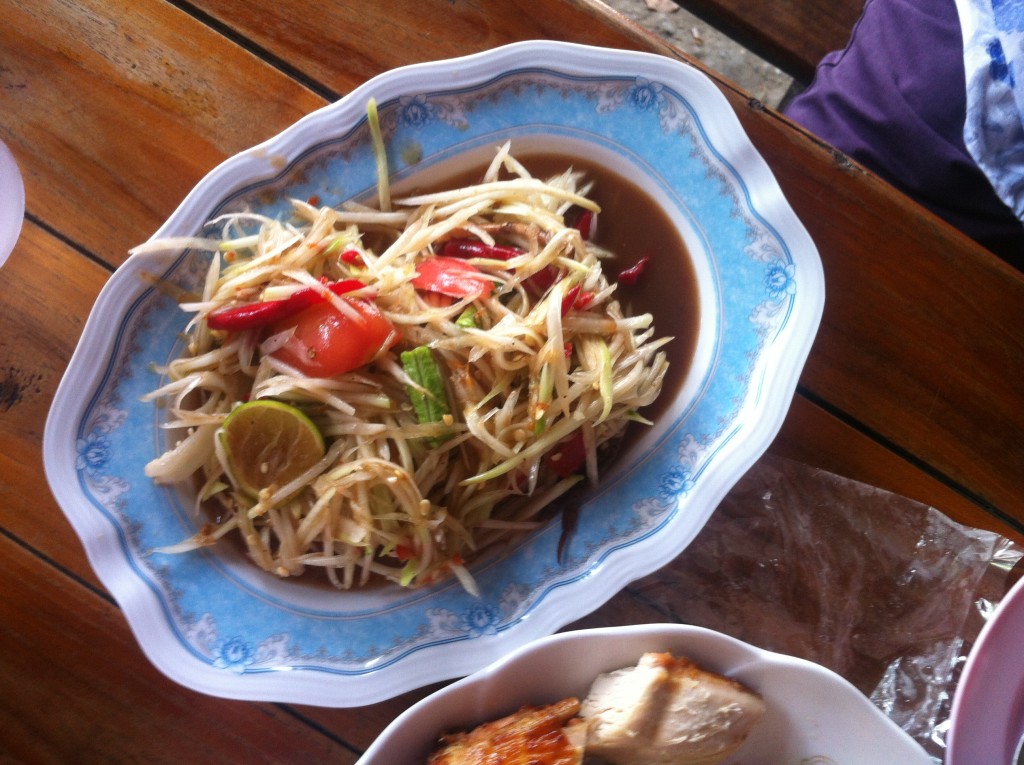
The famous addition to Thailand’s favourite and most pungent variety of papaya salad, pla rah is made by leaving fish in large vats of water to ferment for weeks or even months. It’s used either as a grey sludge or combined with fish sauce, and is added to numerous dishes including the papaya salad variety somtum puu pla rah, alongside pickled crabs and regular fish sauce. While in the past pla rah was often used in its raw form, in order to allay health concerns it’s nowadays more often boiled first.
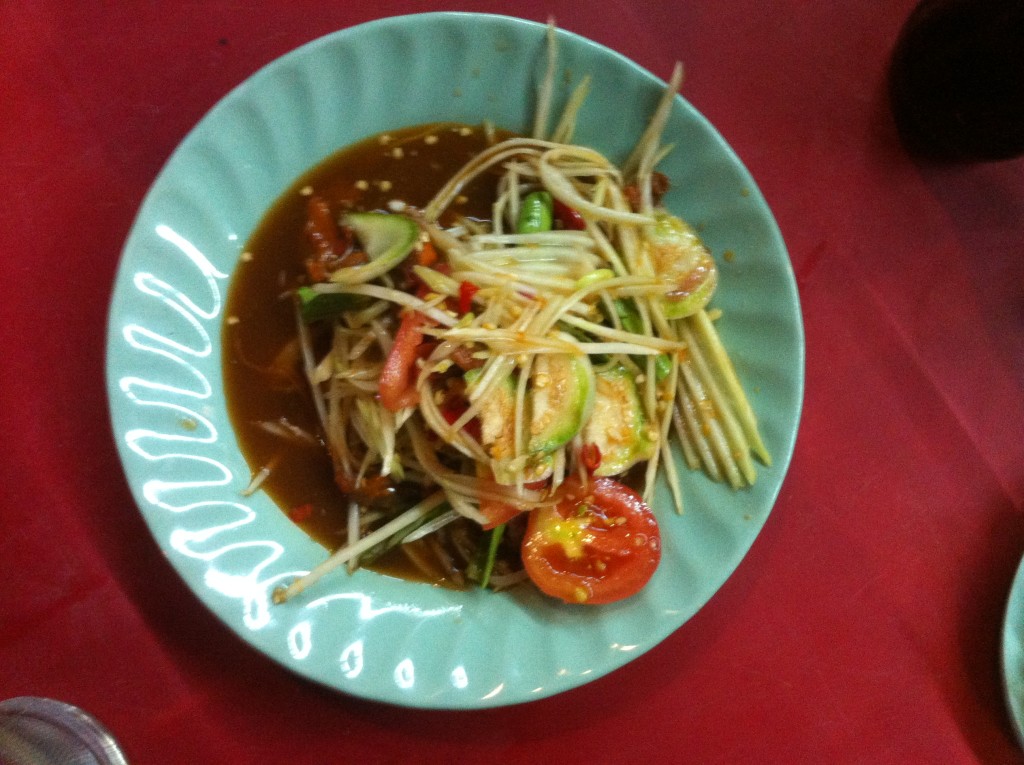
Another embellishment for somtum papaya salad, these cockles are pickled in a deep red bloody fish sauce base. They add an addictive flavour to the dish that’s at once sweet and sour; though, as with pla rah, you want to be sure you’re eating them somewhere that you can count on their freshness in order to avoid a bout of stomach upsets.

The rather unattractive critter known as maengda (distinct from the huge, alien-like maengda talay freshwater horseshoe crab) is sometimes translated into English as ‘pimp’, probably thanks in part for the use of the same word in a Thai idiom to describe parasite-like people. In this dish, which you definitely won’t find on a westernised Thai restaurant menu, whole maengda water beetles are pounded with chillies in a pestle and mortar to form a dip-like paste that’s commonly eaten with the likes of steamed mackerel and fresh or boiled green vegetables. It’s a rather unconventional view, but to this writer nam prik maengda always has a distinctly apple-like flavour.
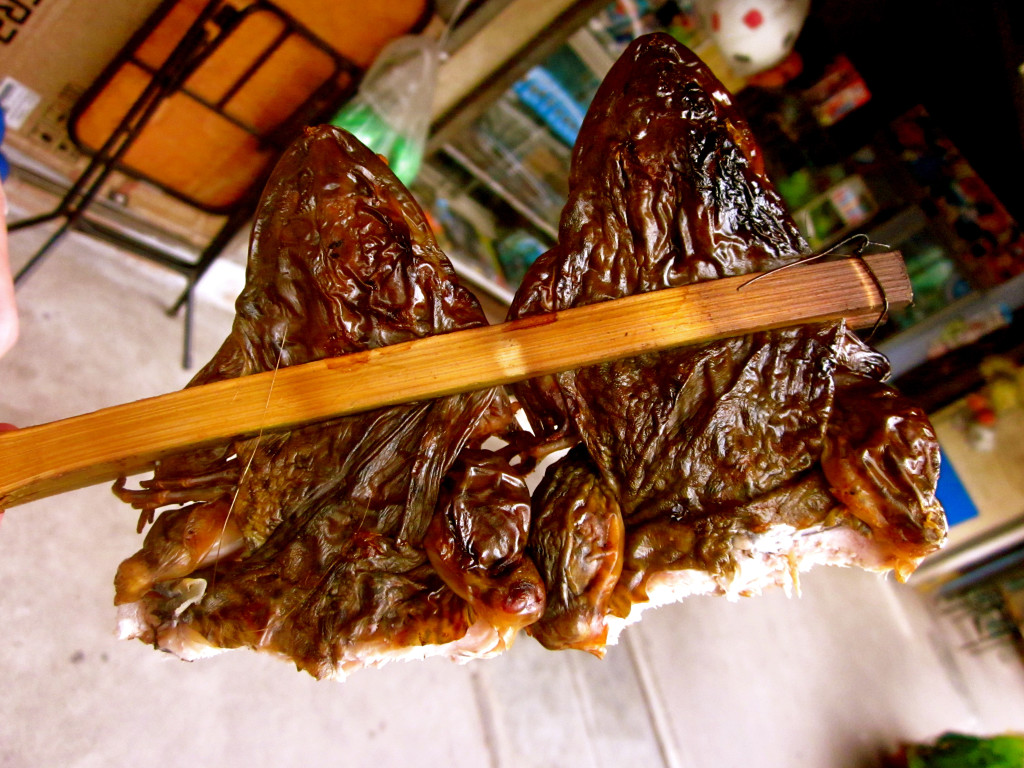
The French certainly don’t have a monopoly on the use of frog in their cuisine – the Thais are rather partial to it, too. While less commonly seen in mainstream Thai cooking, particularly in Bangkok, visit a wet market and you’ll see live frogs in netted bowls waiting to be bought, and travel upcountry and you’ll have more chance of finding one jump into your dinner. Unlike the French, Thais throw every part of the frog into the stockpot – it’s a protein commonly used in soup (gaeng om, a northeastern spicy soup with fistfuls of dill, is a personal favourite with frog), and you’ll also find whole frogs grilled on skewers. This method of preparation, though, can leave the frog with a rather overcooked and chewy texture that’s somewhere between fish and the ubiquitous chicken.

Here’s one that’s a personal favourite, and possibly not what you think it might be. In short, small live shrimps are tossed with chilli, fish sauce and plenty of lime juice, and eaten while still wriggling. This yum kung ten salad is an addictive dish, every bit satisfying thanks to the combination of the light crunch of their tender young shells, the shrimp meat inside, and even their feelers that sprout out from their faces, together with the acidic zingy flavour of the lime and the spice hit from the chilli.
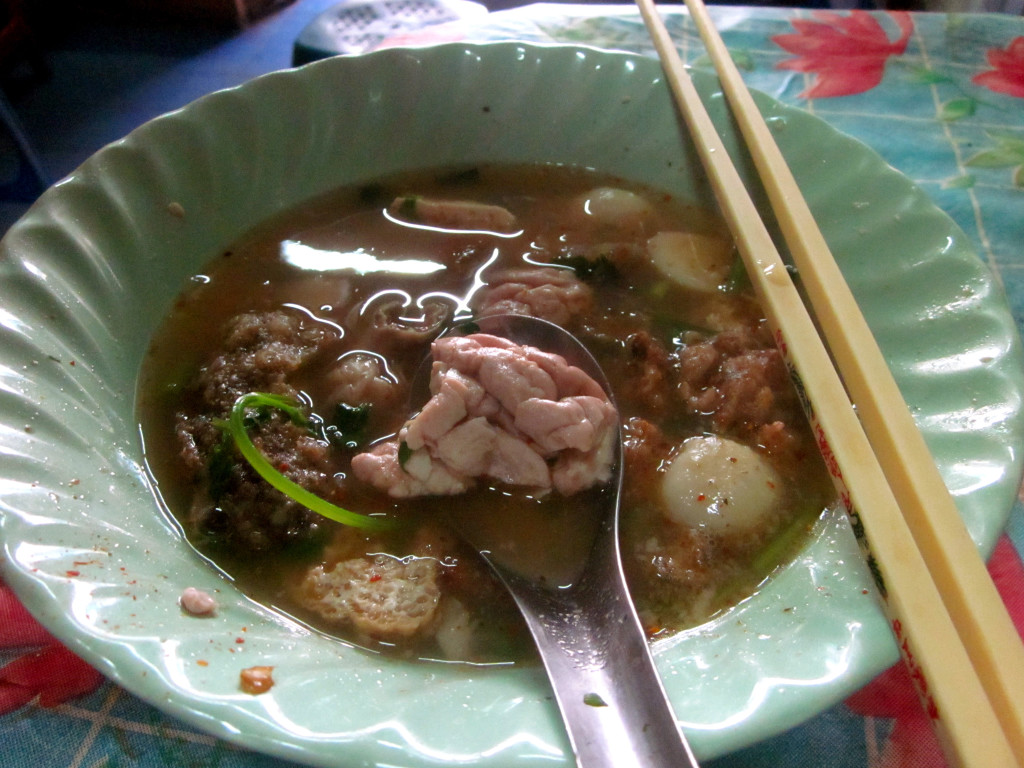
This particularly out-there dish is a peppery, texture-rich broth of Chinese origin. As well as meaty pig brain, you’ll find everything from pork balls to offal and fried fish skin packed in. Tucking into a bowl of tom samong moo is a real experience in itself; there’s no denying it’s a different dish, and another one you won’t see within a million miles of a tourist menu, but it’s worth hunting down and trying if you’re feeling brave!

Regarded as the king of fruits by some and simply as an utter monstrosity by others, the not-so-humble durian has a reputation that precedes it not just in Thailand but across Southeast Asia and even further afield. Packed inside its spiky shell are hunky pockets of moist, tender yellow fruit with an unmistakably meaty teacher and characteristic stench. It’s so famously stinky that it’s banned on most forms of air-conditioned public transport around Asia; few hotels will be too pleased if you turn up with a bag to chow down on in your room, either. Durian is a love, hate or grow-on-you kind of fruit; if you’re not a fan of it in its purest form, it’s worth giving durian ice cream a try, too – the deliciously meaty texture even comes across in frozen dairy form.
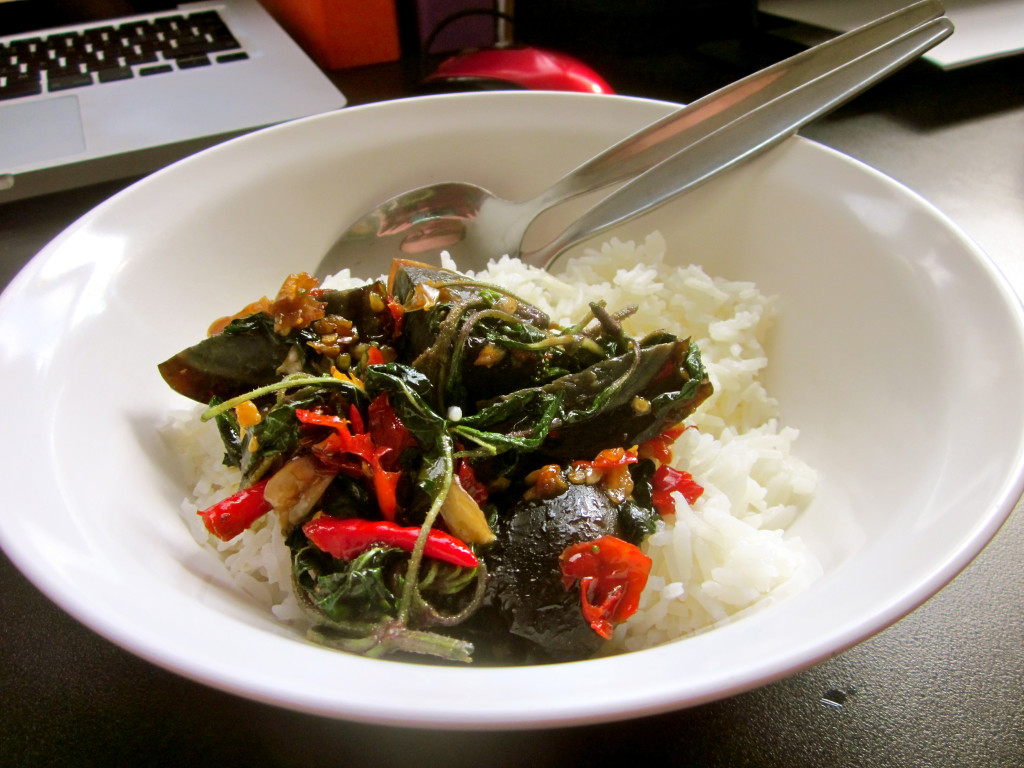
Together with its chalk-like and yet strangely satisfying flavour, this hard-boiled egg has something of a reputation for its infamously dark brown ‘white’ and grey yolk. Also known as the hundred-year-old egg, this egg – which has a bright pink shell – is preserved for a month or more in what’s unfortunately a questionable mix of chemicals that raise the alkalinity of the egg and give it its distinctive flavour and appearance. It’s a popular addition to the Thai breakfast staple of joke, a rice porridge dish – it’s also commonly served in a yum kai yeow maa salad, and is great as the main protein in everyday stir-fried dishes like pad krapao. If you’re planning on trying this one, you’ll probably want to pretend we didn’t tell you the Thai name literally translates as ‘horse pee egg’.
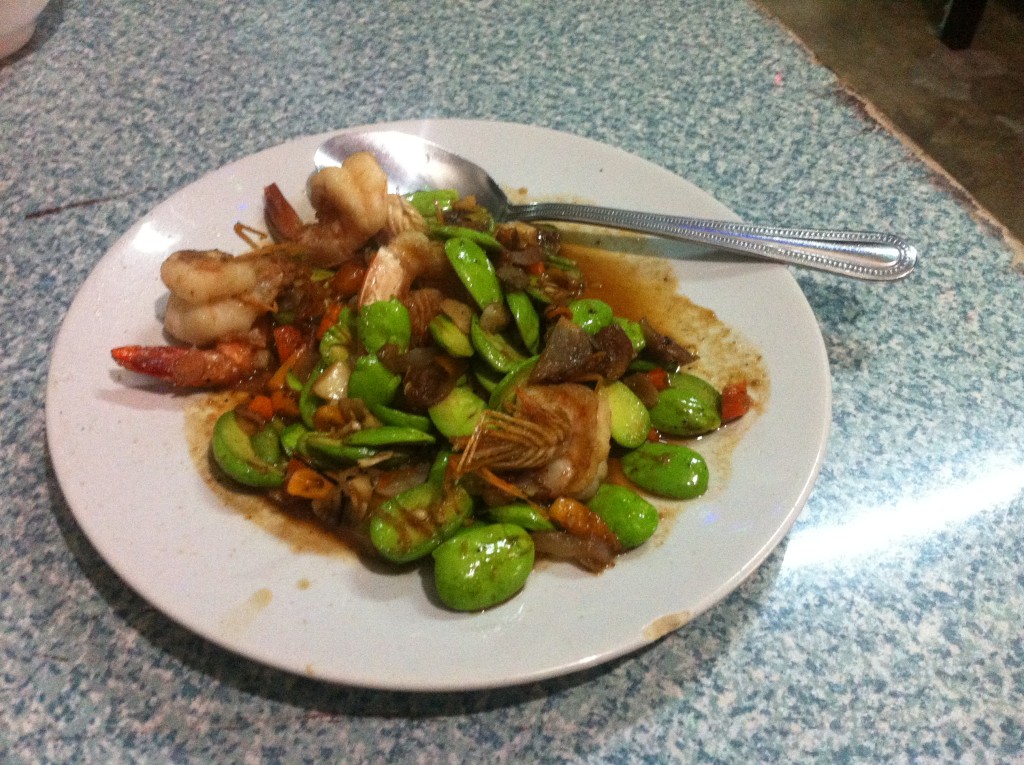
These southern Thai favourites looking somewhat akin to broad beans, but they pack a pungent stench – hence the English name – and deep flavour. They’re commonly stir-fried with pork, or seafood like fresh prawns, along with just as flavoursome shrimp paste and a concoction of southern spices like fresh turmeric. They might pack a scented punch, but stink beans are irresistible!
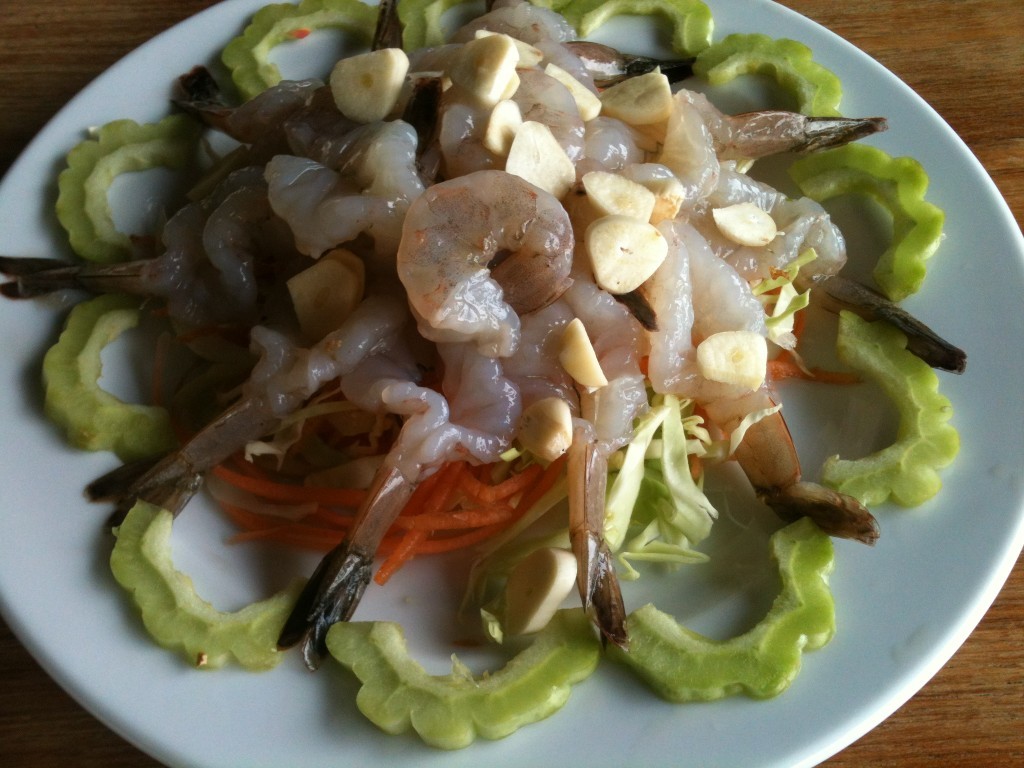
Possibly the least offensive entry on this list, kung che nam pla is a Thai-style ceviche dish of butterflied, tail-on raw king prawns marinated in fish sauce. The prawns are served along with fresh chilli, garlic and green vegetables – commonly slices of bitter melon – which are all intended to be eaten alongside the prawns themselves, along with a spicy and sour accompanying dip. It’s a refreshing and addictive seafood feast!

These seasonal specialities are a favourite addition to the northeastern dish of gaeng hed, a mushroom soup that’s something of a combination of all the best items on this list of unusual foods – as well as red ant eggs and several types of mushrooms and pumpkin, expect to find pla rah fermented fish making it into the mix. Red ant eggs, which are plucked from nests at the top of mango trees, are also commonly eaten as part of simpler dishes like the yum kai mot daeng salad and gaeng pak wan kai mot daeng soup, the latter combined with a local sweet green vegetable.

Don’t squirm – chicken feet are succulent, tender, and full of collagen! You’ll even find these in KFC’s Bargain Buckets adapted to suit the Thai market; they’re served up deep-fried in much the same way at markets around the country, alongside fried chicken parts that you might find somewhat more conventional. Other traditional Thai ways to cook chicken feet include throwing them into tom super, a spicy tom-yum-like broth with plenty of chilli, galangal and lemongrass.
Which of these dishes is your favourite? Let us know in the comments!
All photos by Chris Wotton.
At Expique our mission is to help people discover the real Bangkok and the local cultures. We do this through a range of experiences including Food Tours, Walking Tours and Tuk Tuk Tours
If you love food as much as us,
you will love our food tours in Bangkok
Subscribe to Our Newsletter
Subscribe to our newsletter to receive monthly news and tips about exploring Bangkok.